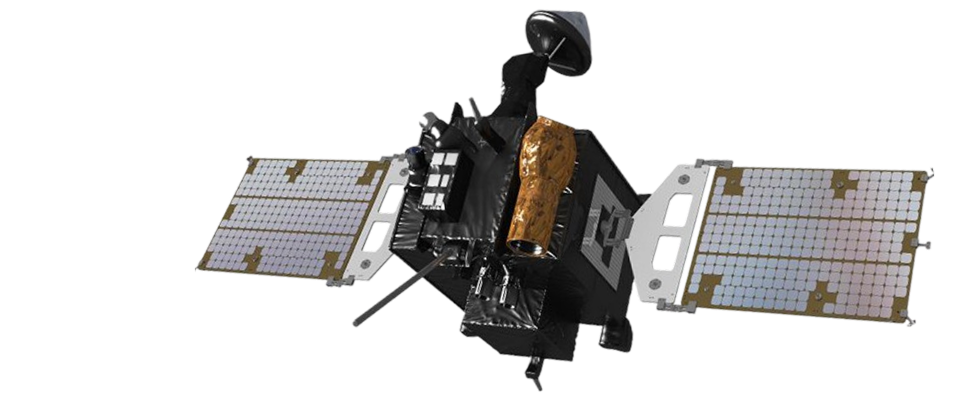Danuri(KPLO)

- Total Mass : Approximately 678 kg (1.82m×2.14m×2.29m)
- Mission Duration : 3 years
- Operational Orbit : Circular orbit at 100 km altitude above the Moon
- Payloads : 6
- Launch Date : August 5, 2022
- Orbital Insertion : December 26, 2022

Danuri (KPLO), Korea’s first lunar orbiter, is an unmanned spacecraft that operates at an altitude of 100 km in a circular lunar orbit to conduct scientific observations. The Korea Aerospace Research Institute (KARI) oversees the system, spacecraft bus, and ground stations in collaboration with domestic universities and research institutes, as well as NASA, which supports payloads, deep space communication, and navigation technologies. The orbiter measures 1.82 m x 2.14 m x 2.29 m and carries six onboard payloads.
The main components of the KPLO development project include the construction of the orbiter and its payloads, the establishment of a deep space ground station, preliminary research for Phase 2, and international collaboration with NASA. KARI leads the overall system, spacecraft bus, and ground operations in partnership with six major domestic research institutes and NASA. NASA provides onboard scientific instruments and supports tracking, communication, and deep space navigation.
Lunar orbit missions using Danuri (KPLO) require technologies such as spacecraft design and manufacturing for extreme environments, precision flight navigation and control to the Moon, and lunar orbital insertion techniques.
KARI aims to secure key capabilities, including lightweight orbiter design, high-capacity propulsion systems, navigation to lunar distances, and deep space communication through the construction of a large deep space antenna to counter signal attenuation across the Earth-Moon distance. NASA is providing technical support and cooperation in deep space communications and navigation.
KARI implemented a lightweight design for the orbiter's electronics—including onboard computers, power control and distribution units, data processors, and harnesses—reducing the weight from over 80 kg to around 50 kg, and lowering the power consumption of the signal/power distribution system from 110W to 65W. The institute also localized the development of a high-thrust propulsion system with four 30N-class engines, compared to the 5N-class thrusters used in conventional attitude control systems.
Furthermore, a 35-meter deep space antenna was constructed in Yeoju to enable long-distance communication with the Moon. It is equipped with high-power transmitters, high-gain antennas, and low-noise receivers.